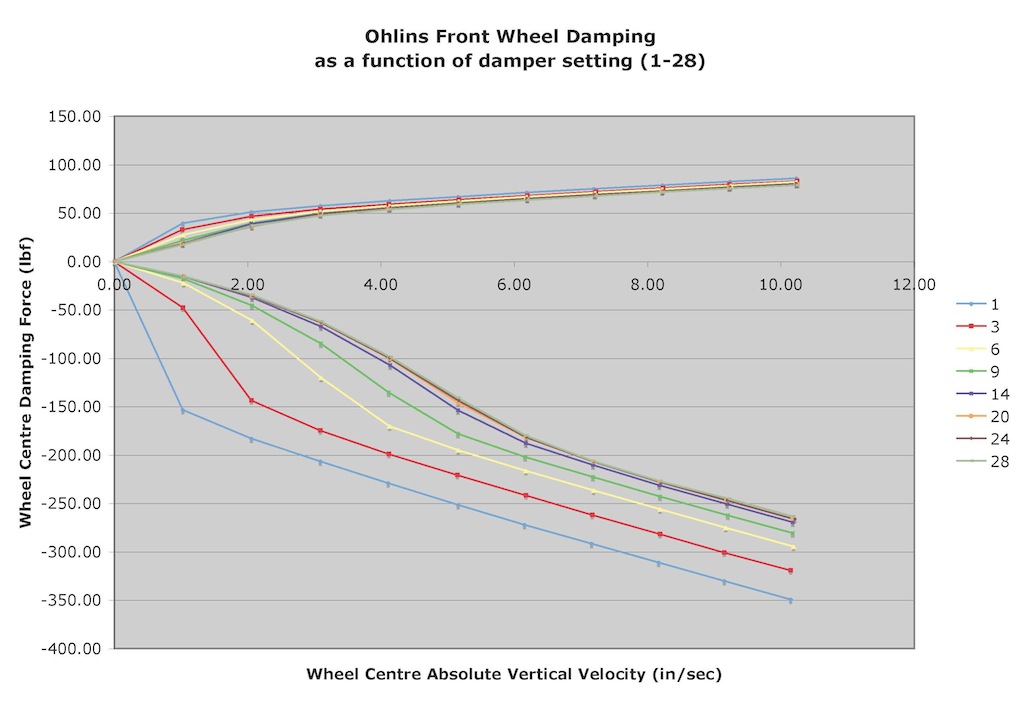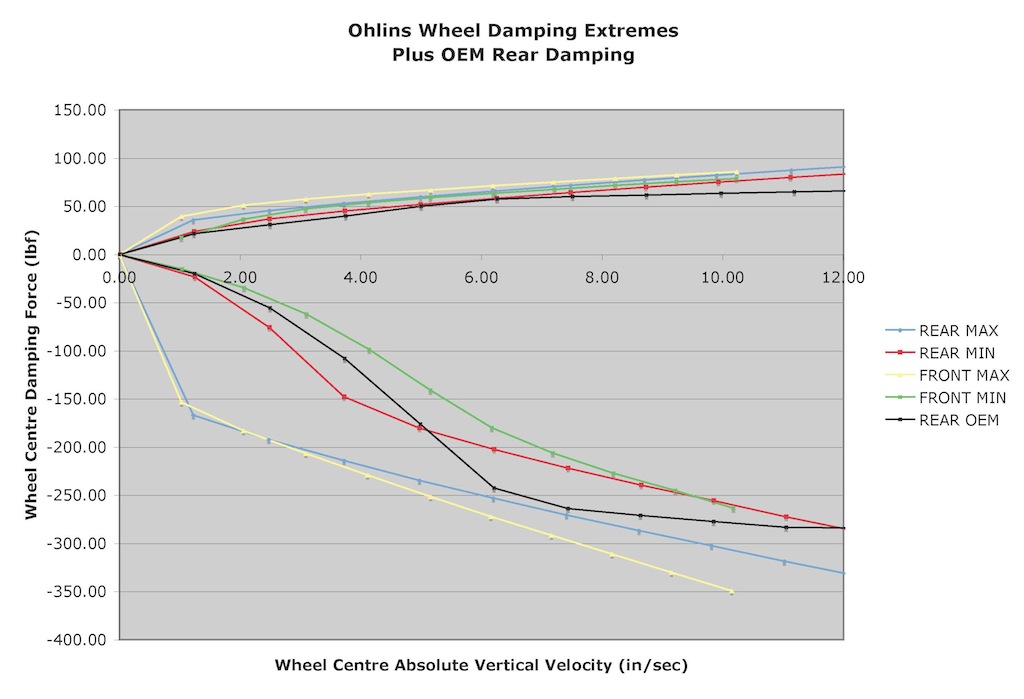With the suspension completely removed this winter, I took the opportunity to have the dampers dyno tested on a Roehrig 2VS shock dyno.
http://roehrigengineering.com/produc...actuators/2vs/
Not mine, unfortunately, so I had to pay for what I am about to reveal. As I had an OE rear shock on hand (for no reason than I hadn't gotten around to throwing it out, although it was still serviceable with about 90,000 km of use). The OEM shock provides an interesting comparison.
It is typical to test dampers at shaft speeds from 0 - 10 inches per second and to measure the damping force in lbs (+ve for compression and -ve for rebound). The front struts have 28 adjustment positions and the rear shocks have 32 adjustment positions, so both were tested at a sampling of the range, with more emphasis on the stiffer end.
The chassis (and the wheel) do not respond at the shaft speed, but at the shaft speed divided by the motion ratio. Similarly the damping force seen by the chassis (or wheel) is not the force at the damper shaft, but that force times the motion ratio. So rather than providing the raw data from the shock dyno, I have adjusted the forces and velocities by the motion ratio. This makes it possible to meaningfully compare the front damping to the rear.
FRONT STRUT

Several conclusions can be drawn from the above graph:
1) the Ohlins strut adjustments are effective from 1 (stiffest) to about 14 (mid adjustment), with any setting higher than 14 providing practically no change in damper characteristics. For reference, Ohlins recommends a setting of 10 as a starting point.
2) the Ohlins strut is a single-adjustable that primarily affects rebound damping but with a lesser effect on compression damping.
REAR SHOCK

1) like the front strut, the rear adjustments are effective over about half the total adjustment range (about 1 to 15, 32 being maximum). Higher settings were omitted to avoid congesting the graph. Again Ohlins recommends 10 as a starting point.
2) the rear shock has similar damping curves to the front.
3) the OEM rear shock has less compression damping than the Ohlins shock at any setting of the Ohlins shock.
4) the OEM rear shock has less low-speed rebound damping than the Ohlins shock at any setting of the Ohlins shock (which probably explains some of the float experienced on the OE suspension).
FRONT AND REAR COMPARED

1) the full-stiff settings on the Ohlins dampers are similar front and rear.
2) the full-soft setting on the Ohlins front strut is considerably softer in rebound than the full-soft setting on the Ohlins rear shock.
In my experience a setting of 10 works well both front and rear for street driving, even though my rear springs are twice as stiff as those that came with the Ohlins kit (which would suggest that a higher setting at the rear might be desirable).
The other benefit of having the dampers tested is that one can see how well each side is matched to the other, at the same damper setting. My dampers appear well matched, side to side.